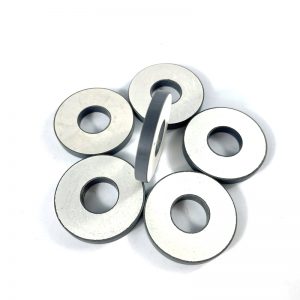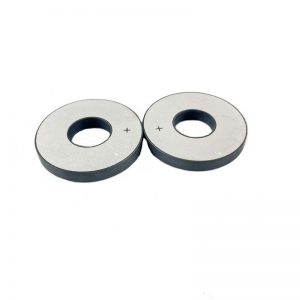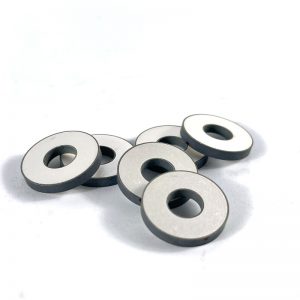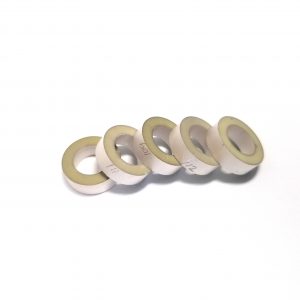 The conversion efficiency is related to the selection of transducer material, vibration form, structure of mechanical vibration system (including support mechanism), and working frequency. Tune', the problem of ultrasonic transmitters has been solved. There are two types of materials for piezoelectric ceramic transducers: magnetostrictive metal and piezoelectric ceramic. Piezoelectric ceramic transducers are electronic ceramic materials with piezoelectric properties. The main difference from typical piezoelectric quartz crystals without ferroelectric components is that the crystal phases that make up their main components are ferroelectric grains. Because ceramics are polycrystalline aggregates with randomly oriented grains, the spontaneous polarization vector of each ferroelectric grain is also disoriented.
The conversion efficiency is related to the selection of transducer material, vibration form, structure of mechanical vibration system (including support mechanism), and working frequency. Tune', the problem of ultrasonic transmitters has been solved. There are two types of materials for piezoelectric ceramic transducers: magnetostrictive metal and piezoelectric ceramic. Piezoelectric ceramic transducers are electronic ceramic materials with piezoelectric properties. The main difference from typical piezoelectric quartz crystals without ferroelectric components is that the crystal phases that make up their main components are ferroelectric grains. Because ceramics are polycrystalline aggregates with randomly oriented grains, the spontaneous polarization vector of each ferroelectric grain is also disoriented.
If a transducer made of this piezoelectric ceramic is placed in water, under the action of sound waves, charges will be induced at both ends of the transducer, which is a sound wave receiver. In addition, the piezoelectric effect is reversible. If an alternating electric field is applied to a piezoelectric ceramic sheet, the ceramic sheet will occasionally become thinner and thicker, while generating vibration and emitting sound waves. In order for ceramics to exhibit macroscopic piezoelectric properties, piezoelectric ceramics must be polarized in a strong DC electric field after firing, with multiple electrodes on the end face. Tune', the polarization vector of the original disordered orientation prioritizes the direction of the electric field. After the electric field is eliminated, the polarized piezoelectric ceramics will maintain a certain macroscopic residual polarization strength, thus giving the ceramics a certain pressure.
| spec | Dimension (mm) |
Radial frequency (Khz) |
Capacitance (pf) |
Dielectric dissipation factor tanδ(%) |
Electromechanical coupling coefficient (Kr) |
Impedance Zr(Ω) |
Thickness frequency (Khz) |
| PU-PC25103 | Φ25×Φ10×3 | 66.4 | 1240±12.5% | ≤0.3 | ≥0.46 | ≤15 | 683±5% |
| PU-PC225104 | Φ25×Φ10×4 | 66.4 | 930±12.5% | ≤0.3 | ≥0.46 | ≤15 | 512±5% |
| PU-PC40155 | Φ40×Φ12×5 | 45.9 | 2070±12.5% | ≤0.3 | ≥0.46 | ≤15 | 410±5% |
| PU-PC40155 | Φ40×Φ15×5 | 42.2 | 1960±12.5% | ≤0.3 | ≥0.46 | ≤15 | 323±5% |
| PU-PC40176 | Φ40×Φ17×6 | 40.5 | 1555±12.5% | ≤0.3 | ≥0.46 | ≤15 | 341±5% |
| PU-PC40205 | Φ40×Φ20×5 | 37.9 | 1700±12.5% | ≤0.3 | ≥0.47 | ≤15 | 410±5% |
| PU-PC50206 | Φ50×Φ20×6 | 33.2 | 2490±12.5% | ≤0.3 | ≥0.46 | ≤15 | 341±5% |
| PU-PC501765 | Φ50×Φ17×6.5 | 34.8 | 2430±12.5% | ≤0.3 | ≥0.46 | ≤15 | 315±5% |
| PU-PC50236 | Φ50×Φ23×6 | 31.2 | 2340±12.5% | ≤0.3 | ≥0.47 | ≤15 | 341±5% |
| PU-PC50276 | Φ50×Φ27×6 | 29.3 | 2100±12.5% | ≤0.3 | ≥0.47 | ≤15 | 341±5% |
| PU-PC603010 | Φ60×Φ30×10 | 25.3 | 1922±12.5% | ≤0.3 | ≥0.47 | ≤18 | 205±5% |
 Transductor ultrasónico,Generador ultrasónico,Limpiador ultrasónico - SKSONIC
Transductor ultrasónico,Generador ultrasónico,Limpiador ultrasónico - SKSONIC







